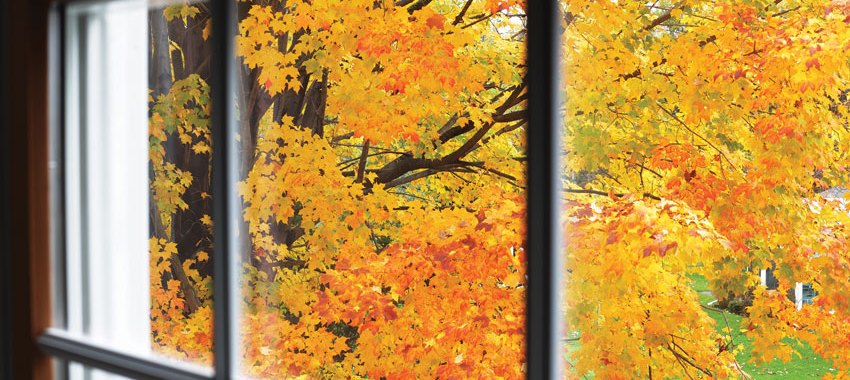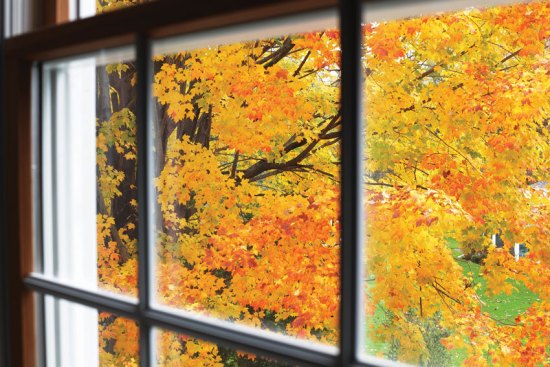 Keeping your home’s exterior siding in good shape is not only a great way to improve your home’s appearance, it also helps you avoid repairs and costly services down the road. With a bit of preventative maintenance, you’ll be able to extend the life of your home’s exterior siding for 50+ years!
Keeping your home’s exterior siding in good shape is not only a great way to improve your home’s appearance, it also helps you avoid repairs and costly services down the road. With a bit of preventative maintenance, you’ll be able to extend the life of your home’s exterior siding for 50+ years!
In this blog, we’ll discuss how to clean and maintain your home’s exterior siding so you won’t have to worry about costs adding up for a few decades.
How Do You Maintain Your Home’s Exterior Siding?
No matter the materials, it’s important to clean your home’s siding every six months or more to keep it in optimal condition for many years to come. You should also inspect your home’s exterior for any damages at least every six months, or after violent storms and high winds. We asked Dominic, Manager of GNH Greenville for tips on how to properly maintain your home’s siding. Here’s his expert advice:
Vinyl Siding Maintenance
Vinyl siding is low maintenance and is designed to be left alone, which is great! However, this doesn’t mean that it doesn’t have to be maintained. The good news is that you can easily clean vinyl siding yourself.
Vinyl siding requires a good power washing about twice a year. Dominic suggests checking a few times a year to make sure no boards have come loose or are cracked. If they are, they will need to be fixed as soon as possible. High winds can cause damage and cracks to vinyl easily, so if you had a windy season, be sure to do a walk-around your home after the storm. Remember to give it a good pressure-washing twice a year to reduce damage and renew bright colors.
Tip: Making repairs early will save you money on more costly repairs further on down the road!
Wood Siding Maintenance
Wood siding will need to be treated every 4 to 6 years. In New York, sun and snow are particularly abundant so you may have to treat it more often than that. Because wood is porous and vulnerable to the elements, it also requires paint, stain or sealant to prevent it from moisture, rot and decay.
Like vinyl siding, you need to check the wood siding for cracks and breaks. Most repairs are easy to fix, so do it as soon as you notice the damage. If the color of your wood siding has been lost due to fading and old age, or if it’s spotted with mildew or rest, don’t worry! To recover your wood’s natural beauty, Dominic recommends using a stain remover, wood cleaner or brightener.
Stucco Maintenance
Often times, woodpeckers will attack your stucco siding. They tend to leave holes which will need to be replaced immediately or else they will live in your walls. Since stucco is a very porous material, if a tree leaks its sap on your siding, it can take over and cause huge problems. It can stain rather quickly so go around once or twice a year to check. To remove any stains that are starting to form, Dominic suggests using a degreaser and bleach.
Cedar Shake Maintenance
If you want your cedar shake siding to live for a long time, you want to make sure it’s treated or stained properly and checked often. Left untreated, cedar shakes can discolor and start to soften, causing it to rot. In order to maintain healthy cedar shakes, you want to make sure to paint or stain the cedar every 5 years. Stain is a more effective protectant for cedar than paint so Dominic recommends opting for stain when you can. Hiring a professional to paint or stain your cedar shakes could cost upwards of $2,500 depending on your home’s size.
How Often Should You Clean Your Home’s Siding?
The exterior of your home needs a good cleaning about twice a year. Overtime, cobwebs, dirt and mildew can build up and shorten the life of your siding. A clean house will protect your siding as well as your investment.
How Do You Clean All Types of Siding?
Cleaning the siding of your home can be a bit treacherous, but luckily you only need to do it once or twice a year!
All types of siding benefit from a good cleaning to remove residue. Here’s how Dominic recommends cleaning your siding:
1. Check for Cracks and Damages in the Siding
Do a quick walk around your home and check for cracks, chipped paint, cracked boards, or other damages before you start the process of cleaning your siding. If you have cracks, water from cleaning could seep into the home, causing serious damage and trouble over time.
2. Invest in a Power Washer
A power washer is key to getting up in the peaks of your house by the roof, blasting away grit and grime, and takes far less time that washing the home’s siding by hand. This is especially true for homes with vinyl and wood siding.
3. Scrub the Siding with TSP
 Next time you’re at GNH Lumber, pick up some TSP (trisodium phosphate). The TSP that GNH Lumber carries is phosphate-free. Mix ½ cup with 1 gallon of water and apply to a sponge, washcloth or soft-bristled brush. Start scrubbing those stubborn areas where birds or spiders have left their droppings. These are usually the toughest things to get out of your siding! Dominic recommends working from the bottom to top to avoid streaking and then rinse.
Next time you’re at GNH Lumber, pick up some TSP (trisodium phosphate). The TSP that GNH Lumber carries is phosphate-free. Mix ½ cup with 1 gallon of water and apply to a sponge, washcloth or soft-bristled brush. Start scrubbing those stubborn areas where birds or spiders have left their droppings. These are usually the toughest things to get out of your siding! Dominic recommends working from the bottom to top to avoid streaking and then rinse.
Don’t want to mix your own solution? Dominic recommends 30 Seconds Cleaner for Algae, Mold and Mildew. This powerful formula is safe to use around landscaping, plants and your lawn. Simply attached to a garden hose, spray on and hose off. It is proudly made in America and has been around since 1977 so it is a tried an true product. Stop into our Greenville or Windham locations and ask for it by name.
Keeping your home clean and maintained properly can save you tons of money in the long run!
Have more questions? Stop in and see Dominic at GNH Greenville!






 Keeping your home’s exterior siding in good shape is not only a great way to improve your home’s appearance, it also helps you avoid repairs and costly services down the road. With a bit of preventative maintenance, you’ll be able to extend the life of your home’s exterior siding for 50+ years!
Keeping your home’s exterior siding in good shape is not only a great way to improve your home’s appearance, it also helps you avoid repairs and costly services down the road. With a bit of preventative maintenance, you’ll be able to extend the life of your home’s exterior siding for 50+ years!
 Next time you’re at
Next time you’re at 



 Having an occasional lazy day indoors is relaxing, but if you’re stuck inside because of the cold, why not be proactive? There are a variety of easy projects you can take on during the winter that you will appreciate thoroughly when springtime rolls around again… So, why not make the most of the next winter storm?
Having an occasional lazy day indoors is relaxing, but if you’re stuck inside because of the cold, why not be proactive? There are a variety of easy projects you can take on during the winter that you will appreciate thoroughly when springtime rolls around again… So, why not make the most of the next winter storm?
 4) Make Your Closet More Organized
4) Make Your Closet More Organized










 Stop in to
Stop in to 
 Ahhh! A lush lawn of perfect green! It’s what we all dream about when it’s summertime. The soft, rolling green backdrop to our cookouts, ballgames, BBQs and entertaining. That said, if you have a lawn with bald or bare spots, it can be frustrating to diagnose and fix.
Ahhh! A lush lawn of perfect green! It’s what we all dream about when it’s summertime. The soft, rolling green backdrop to our cookouts, ballgames, BBQs and entertaining. That said, if you have a lawn with bald or bare spots, it can be frustrating to diagnose and fix.



